ETH News
All stories that have been tagged with Supercomputing
Super-fast computers for AI: Torsten Hoefler awarded prestigious ACM Prize
News

Torsten Hoefler wins the prestigious ACM Prize in Computing for his pioneering work in high-performance computing. The fact that supercomputers have become so powerful that AI models can be trained very quickly with very large volumes of data is partly down to his research.
Tiny component for record-breaking bandwidth
News

A modulator developed by researchers from ETH Zurich has broken the terahertz mark. The ultrafast component efficiently transmits large volumes of data into the fibre-optic network in a short space of time.
Sunken worlds under the Pacific?
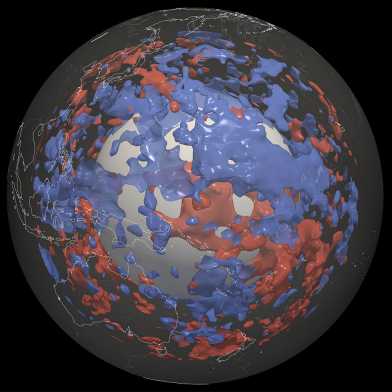
Geophysicists at ETH Zurich are using models of the lower mantle to identify areas where earthquake waves behave differently than previously assumed. This indicates the presence of zones of rocks that are colder, or have a different composition, than the surrounding rocks. This finding challenges our current understanding of the Earth's plate tectonics – and presents the researchers with a major mystery.
ETH Zurich and EPFL enhance collaboration to boost AI in Switzerland
News

ETH Zurich and EPF Lausanne (EPFL) are intensifying their collaboration in artificial intelligence (AI). They have founded the Swiss National AI Institute (SNAI) with the aim of addressing challenges in AI by leveraging their broad scientific expertise. Funding for the related research programs has been secured.
New research infrastructure: "Alps" supercomputer inaugurated
Press release
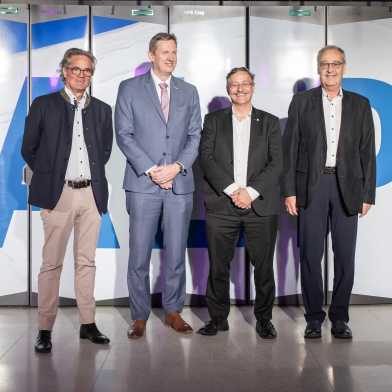
On 14 September, ETH Zurich officially inaugurated the new "Alps" supercomputer at the Swiss National Supercomputing Centre (CSCS) in Lugano. The celebrations in Lugano were attended by Federal Councillor Guy Parmelin and well-known personalities from the worlds of science and politics.
How the plant world shapes the climate cycle
News

In order to understand the Earth's resilience, researchers at ETH Zurich are modelling climate changes from times long past. And they show: Plants are not simply victims of circumstances, but have helped to shape climate conditions on Earth.
A new ion trap for larger quantum computers
News
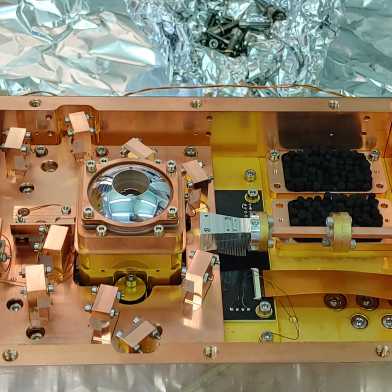
Researchers at ETH have managed to trap ions using static electric and magnetic fields and to perform quantum operations on them. In the future such traps could be used to realize quantum computers with far more quantum bits than have been possible up to now.
Scientists successfully simulate protein complex that initiates fertilisation
News
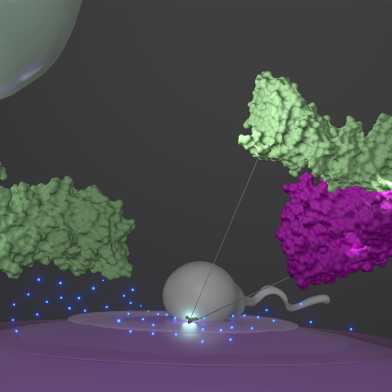
Researchers at ETH Zurich recently developed highly realistic simulations of the proteins on sperm and egg cells coupling together before they fuse. These findings enabled the research team to solve several mysteries of fertilisation at once, which could help to accelerate development of more targeted infertility treatments.
World’s most powerful supercomputers support UN SDGs and global sustainability
- Press release
- Homehero
- News
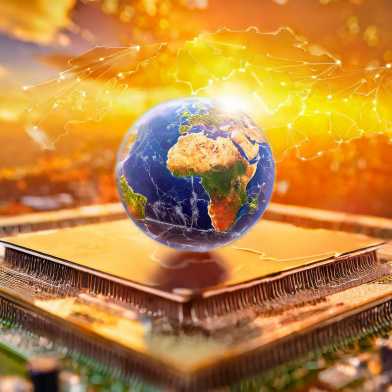
The Federal Department of Foreign Affairs (FDFA) and ETH Zurich, in collaboration with their international partners, are launching the International Computation and AI Network (ICAIN) at the World Economic Forum (WEF) 2024 in Davos. Its mission is to develop AI technologies that benefit society as a whole, as well as being accessible to all and sustainable, thereby helping to reduce global inequality.
Joint initiative for trustworthy AI
Press release

ETH Zurich and EPFL are launching the “Swiss AI Initiative”, whose purpose is to position Switzerland as a leading global hub for the development and implementation of transparent and reliable artificial intelligence (AI). The new Alps supercomputer based at the Swiss National Supercomputing Centre (CSCS) provides the supporting world-class infrastructure.
A good solution’s secret
- Homehero
- News
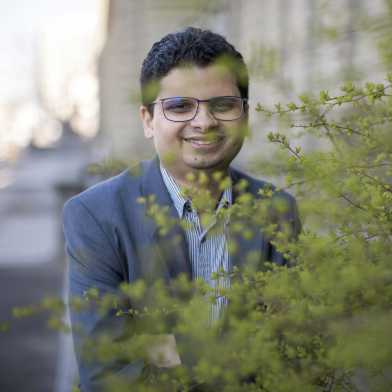
Mathematician Siddhartha Mishra has been awarded this year's Rössler Prize for his research on solutions for highly complex flow and wave phenomena. He is being recognised for his contributions to faster and more accurate predictions of weather, climate and tsunamis, and for the computer simulations that enable them.
“For very small problem sizes a classical computer is faster”
News
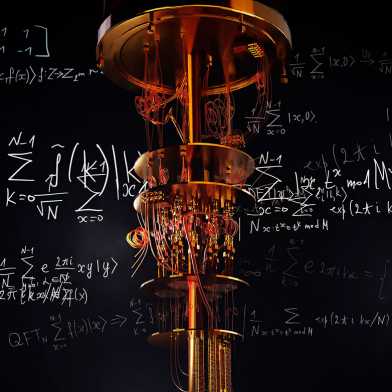
In theory, quantum computers vastly outperform classical computers in terms of computing speed. For them to do so in practice, it is necessary to design more and novel high-speed algorithms, says ETH supercomputing specialist Torsten Hoefler.
Turbulent affairs: Scientists enhance the simulation of strong flow phenomena
- News
- Homepage

It doesn’t have to be a hurricane or a tsunami — even a simple running water tap induces a shock wave upon impact with the sink. Now, with the help of the Swiss National Supercomputing Centre's (CSCS) supercomputer “Piz Daint”, mathematician Siddhartha Mishra of ETH Zurich is working to overcome current barriers to simulating and comprehending highly turbulent flows.
At CSCS, energy efficiency is a key priority, even at high performance
News

The term "high-performance computer" already implies a high energy demand. Energy efficiency is therefore a central consideration in the procurement and use of supercomputers at the Swiss National Supercomputing Centre (CSCS) — just as it was during the planning of the new building in Lugano more than a decade ago.
Torsten Hoefler receives the Sidney Fernbach Award
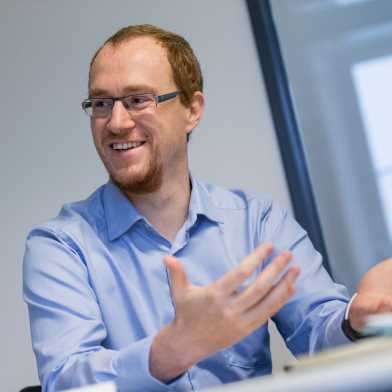
IEEE Computer Society honours ETH Zurich professor, Torsten Hoefler with the Sidney Fernbach Memorial Award for his pioneering contributions to large-scale parallel processing systems and supercomputers. The ideas and software professor Hoefler and his group developed are actively used by tens of thousands of scientists today to power large-scale scientific simulations and artificial intelligence systems.
New method cracks simulation of foam formation
News
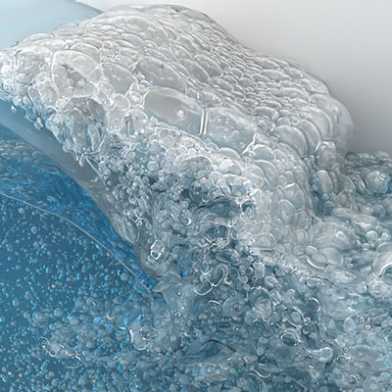
Whether on top of a cappuccino or in the wake of waterfalls, foam is omnipresent. Until now, simulating foams realistically with a supercomputer has been almost impossible, but a method further developed by the research group of ETH and Harvard professor Petros Koumoutsakos has overcome the hurdles.
Software to speed up training of neural networks
News

When working with neural networks, their training is the single most resource-demanding and costly process. Scientists at the ETH Zurich have now developed a software that considerably speeds up training. This will be especially relevant for scientific applications of future users of “Alps” at CSCS.
Quantum computing breakthrough in error correction
Press release
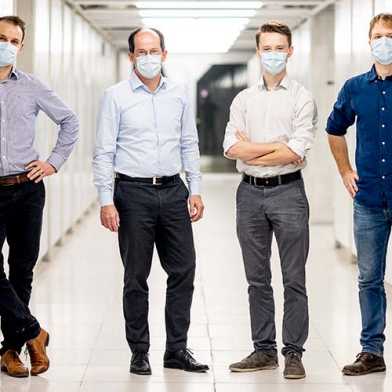
Researchers at ETH Zurich have succeeded, for the first time, in quickly and continuously correcting errors in digital quantum systems. This means they have overcome an important hurdle on the road to practical quantum computing.
Why do we need sharper weather and climate models?
Zukunftsblog
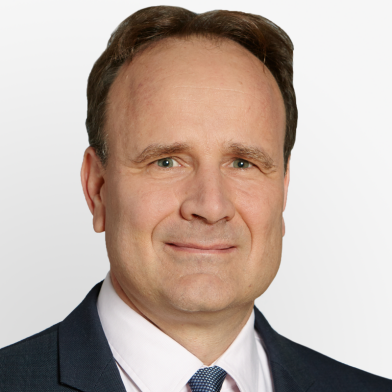
We know that CO2 is warming the planet. But if we want to understand its consequences and avert risks, more accurate weather and climate models are crucial, says Nicolas Gruber.
New, high-resolution models merge weather and climate
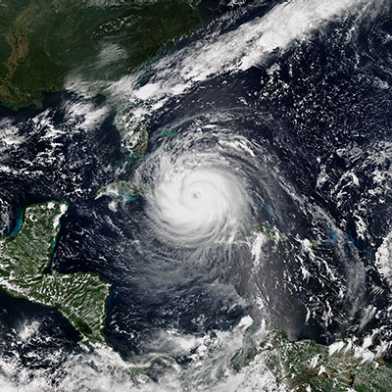
Torrential rain and flooding have dominated the weather over the past few weeks. To forecast these weather events with greater accuracy and gain a better understanding of them against the backdrop of global climate change, ETH Zurich and partners are developing a new generation of high-resolution weather and climate models.
“Trustworthy AI requires interdisciplinary collaboration”
News
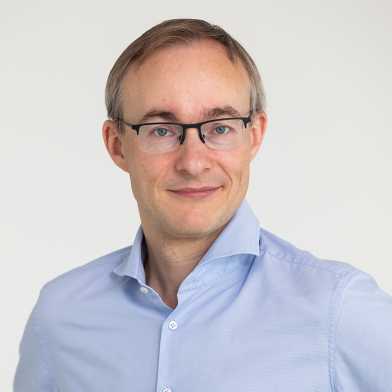
Artificial intelligence and machine learning are key technologies for science, business, and society – but how transparent are their decisions? Andreas Krause, the 2021 recipient of the Rössler Prize and Chair of the ETH AI Center, shares his thoughts on the opportunities and challenges with trustworthy artificial intelligence.
Expanding the limits of ferroelectrics
News

Chiara Gattinoni, a materials theorist and Marie Curie Fellow at ETH Zurich, uses the “Piz Daint” supercomputer at CSCS to investigate a special class of materials: ferroelectrics. In the future, these materials could constitute the heart of low-energy-consuming, miniaturised data storage in electrical devices. One ferroelectric Gattinoni analysed is, according to her, truly magical.
Early endeavours on the path to reliable quantum machine learning
News

The future quantum computers should be capable of super-fast and reliable computation. Today, this is still a major challenge. Now, computer scientists led by ETH Zurich conduct an early exploration for reliable quantum machine learning.
"We don't just procure a new computer"
News
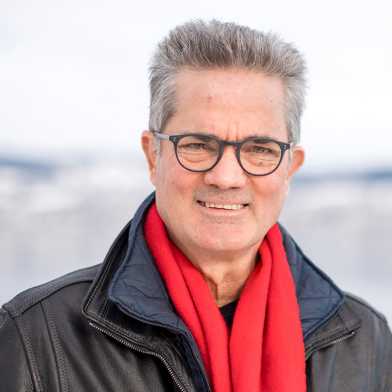
The flagship supercomputer of the CSCS, "Piz Daint", needs to be replaced. Installation of the successor computer, "Alps", is taking place in three phases and will be completed in 2023. CSCS Director Thomas Schulthess explains in an interview why the new computer is so special.
Scientists begin building highly accurate digital twin of our planet
News

A digital twin of our planet is to simulate the Earth system in future. It is intended to support policy-makers in taking appropriate measures to better prepare for extreme events. A new strategy paper by European scientists and ETH Zurich computer scientists shows how this can be achieved.
Modelling the energy transition
News
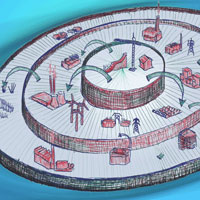
An interdisciplinary research team from ETH Zurich is developing the Nexus-e modelling platform in a project supported by the Swiss Federal Office of Energy. The platform facilitates the analysis of how technological, economic and regulatory developments affect the energy system of the future.
ETH researchers compute turbulence with artificial intelligence
News
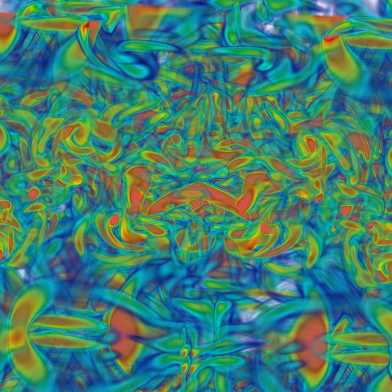
For the first time, researchers at ETH Zurich have successfully automated the modelling of turbulence. Their project relies on fusing reinforcement learning algorithms with turbulent flow simulations on the CSCS supercomputer "Piz Daint".
Soot particles influence global warming more than assumed
News

A team of researchers from ETH Zurich has used simulations on the CSCS supercomputer "Piz Daint" to investigate how ageing mechanisms of soot particles in the atmosphere affect cloud formation. The results show that the influence of ozone and sulfuric acid on soot ageing alters cloud formation and, ultimately, the climate.
"Simulation microscope" examines transistors of the future
News
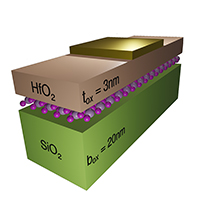
Since the discovery of graphene, two-dimensional materials have been the focus of materials research. Among other things, they could be used to build tiny, high-performance transistors. Researchers at ETH Zurich and EPF Lausanne have now simulated and evaluated one hundred possible materials for this purpose and discovered 13 promising candidates.
Making geothermal energy safer through simulation
News
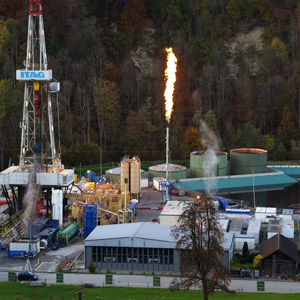
Researchers from the Swiss Seismological Service SED and ETH Zurich are working with the Swiss National Supercomputing Centre CSCS and the Università della Svizzera italiana USI to develop a way of utilising geothermal energy safely with the help of supercomputers.
A new theory for Semiconductors made of nanocrystals
News
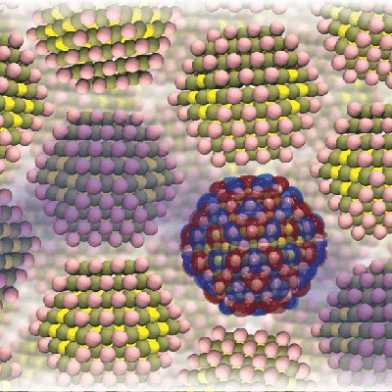
Researchers at ETH have provided the first theoretical explanation for how electrical current is conducted in semiconductors made of nanocrystals. In the future, this could lead to the development of new sensors, lasers or LEDs for TV screens.
A “simulation booster” for nanoelectronics
News

Two research groups from ETH Zurich have developed a method that can simulate nanoelectronics devices and their properties realistically, quickly and efficiently. This offers a ray of hope for the industry and data centre operators alike, both of which are struggling with the (over)heating that comes with increasingly small and powerful transistors.
Waiting for the complete rupture
News

Nepal was struck by an earthquake with a magnitude of 7.8 in 2015, but the country may still face the threat of much stronger temblor. This is the conclusion reached by ETH researchers based on a new model that simulates physical processes of earthquake rupture between the Eurasian and Indian Plates.
Of autonomous duck taxis and a precise Mars landing
News
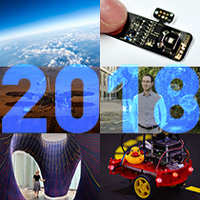
ETH technology that flew to Mars, rubber duckies that travelled around Duckietown in self-driving taxis and moles that warn of tumours – for ETH, 2018 was marked by innovative flair and extraordinary research. We take a look back.
Encouraging prospects for moon hunters
News
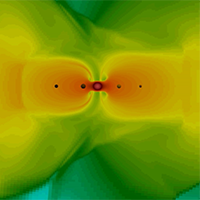
Astrophysicists of the University of Zürich and ETH Zürich show how the icy moons of Uranus were born. Their result suggests that such potentially habitable worlds are much more abundant in the Universe than previously thought.
An ice age lasting 115,000 years in two minutes
News
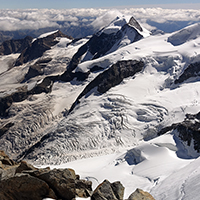
An international research team used a computer model to reconstruct the history of glaciation in the Alps, visualising it in a two-minute computer animation. The simulation aims to enable a better understanding of the mechanisms of glaciation.
Successful ETH quantum researchers
Press release

In mid-2017, the European Commission launched a flagship project in the field of quantum technology. After the Human Brain Project and the Graphene Flagship, the Quantum Flagship is the EU’s third major research programme dedicated to promoting particularly forward-looking technologies in Europe (Future and Emerging Technologies). Among the sub-projects that have now been selected are six that involve ETH researchers.
Computational mathematician honoured
News
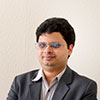
Siddhartha Mishra is the winner of the 2019 ICIAM Collatz Prize which is one of the most prestigious prizes awarded in applied mathematics.
Uncovering atomic movements in crystal
News
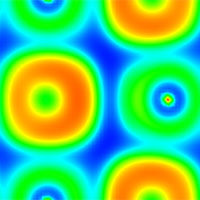
Scientists can spend a long time in heated debates over tiny details – for example, how and whether atoms in a crystal move when heated, thereby altering the symmetry. Using computer simulations for the mineral lead telluride on the CSCS supercomputer “Piz Daint”, ETH researchers have resolved a long-standing controversy.
The Indian who set out to reveal the secret of turbulent fluid flows
News

Avalanches, tsunamis, solar storms: Siddhartha Mishra is captivated by unstable and turbulent flows. He combines mathematics with scientific computing in a bid to understand their common causes. Helping him in his quest are equations, first written down by the Swiss mathematician, Leonhard Euler.
Swimming in schools saves energy
News
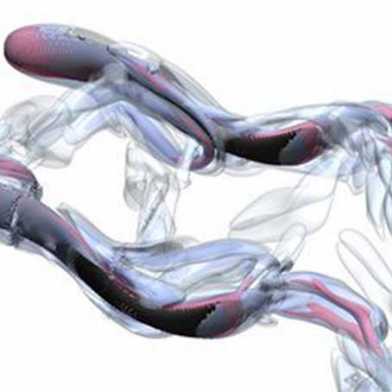
Researchers at ETH Zurich have clarified the previously unresolved question of whether fish save energy by swimming together in schools. They achieved this by simulating the complex physics on the supercomputer ‘Piz Daint’ and combining detailed flow simulations with a reinforcement learning algorithm for the first time.
Seismic calculations
News
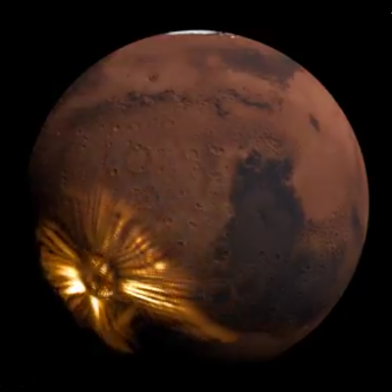
How the InSight mission toMars was prepared with the help of calculations from the supercomputer "Piz Daint" at CSCS.
A research career shaped by supercomputing
News
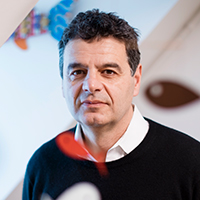
ETH Professor Petros Koumoutsakos wanted to embark on a career at the United Nations. Today, he is one of the world’s leading researchers in the simulation of fluid dynamics using supercomputers.
Piz Daint is a world leader
News
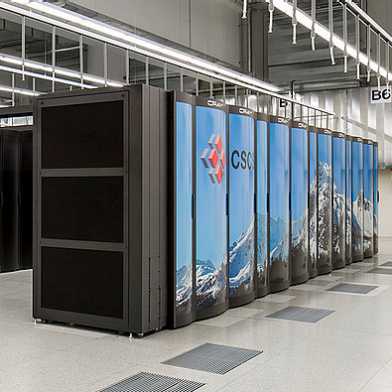
After an extensive hardware upgrade at the end of last year, the CSCS supercomputer Piz Daint is now the most powerful mainframe computer outside Asia. With a peak performance in excess of 20 petaflops, it will enable pioneering research in Switzerland and Europe.
A lifelong fascination with planets
News
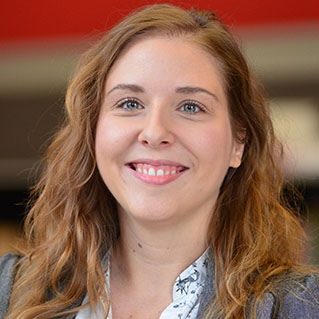
Watching Star Trek as a child first inspired Judit Szulágyi’s fascination with planets and galaxies. Today Forbes ranks the astrophysicist among Europe’s 30 most influential scientists under the age of 30. Watch as she explains how she uses computer simulations to research the birth of giant planets – and how she decided on this career path in the first place.
Earth’s magnetic field under the ‘simulation magnifying glass’
News
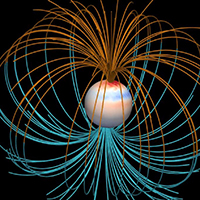
Earth’s magnetic field has reversed direction hundreds of times in the course of our planet’s history. But the cause of those reversals remains unclear. 4 million CPU hours of simulations on the ‘Piz Daint’ supercomputer at CSCS offer fresh clues that point to a phenomenon called ‘dynamo waves’ playing a possible role.
How planets like Jupiter form
News
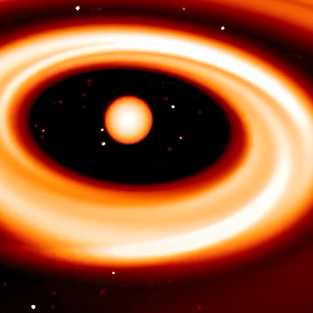
Young giant planets are born from gas and dust. Researchers of ETH Zürich and the Universities of Zürich and Bern simulated different scenarios relying on the computing power of the Swiss National Supercomputing Centre (CSCS) to find out how they exactly form and evolve.
“Collaboration has never been as close as it is today”
News

This week, the Swiss National Computing Centre (CSCS) in Lugano celebrates its 25th anniversary. Christoph Schär, ETH professor with the Institute for Atmospheric and Climate Science, was there from the very start. In the following interview, he describes how supercomputers have developed over this period.
Bubbles lead to disaster
News
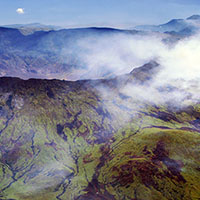
Why are volcanologists interested in vapour bubbles? Because they can accumulate in a magma reservoir underneath a volcano, priming it to explode. Researchers at ETH Zurich and Georgia Institute of Technology have now discovered how bubbles are able to accumulate in the magma.
More computing power for Swiss research
Press release
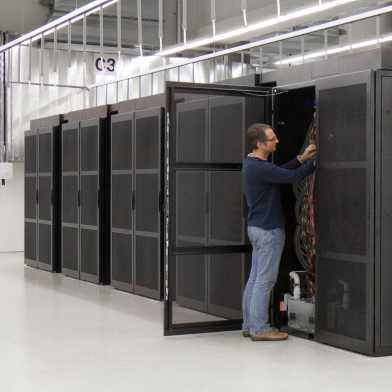
Europe’s most powerful supercomputer Piz Daint is being upgraded, a move that is expected to at least double its computing power. ETH Zurich is investing around CHF 40 million to allow researchers to perform simulations, data analyses and visualisations even more efficiently in the future.
Two finalists in supercomputing
News
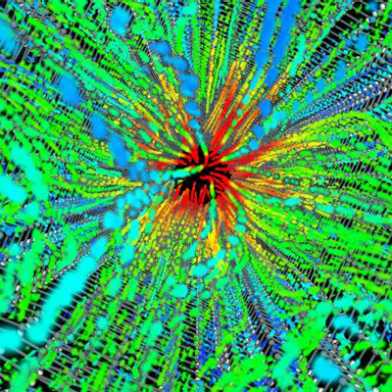
Every year at the SC conference, the Gordon Bell Prize is presented to recognise outstanding work in the field of high-performance computing. This year, two research groups from ETH Zurich competed in the finals, a remarkable achievement considering only five teams have been preselected world-wide.
Turning life into a profession
News

Computer scientist Torsten Hoefler is the winner of this year’s Latsis Prize awarded by ETH Zurich. His Scalable Parallel Computing Laboratory is one of the few laboratories to combine theory and application in the field of high-performance computing. Although mentors warned him against uniting these two aspects, it is precisely by doing so that he has now achieved his success.
Computing for Climate (part 2): How Modern Climate Models Work
Zukunftsblog
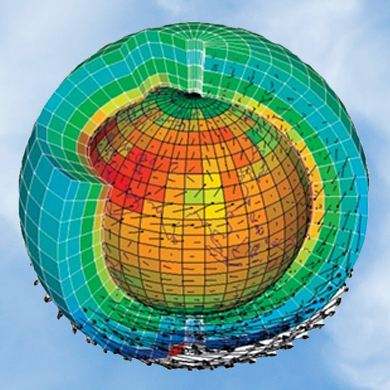
In our previous blog we drew an arc in time from the first theoretical weather computation to present-day climate calculations on massively-parallel computer systems. This follow-up post deals with the climate models and addresses the basic question: How can we simulate the evolving condition of the atmosphere?
Computing for Climate (part 1): Evolution of Models
Zukunftsblog

The desire to foresee the weather and climate probably goes back to early mankind. Whereas experience in reading the signs of weather changes has long helped for short-term predictions of a few hours, it is only for a few decades that we have been able to forecast weather over several days – and simulate the future climate.
6 professors at ETH Zurich appointed
News

At its meeting of 8/9 July 2015, the ETH Board appointed six professors at ETH Zurich in accordance with the application submitted by ETH Zurich President Lino Guzzella.
12 professors at ETH Zurich appointed
News
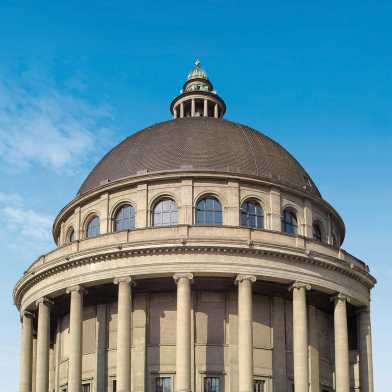
At its meeting of 20/21 March 2015, the ETH Board appointed 12 professors at ETH Zurich in accordance with the application submitted by ETH President Lino Guzzella.
Nanoelectronics on the “computer test bench”
News
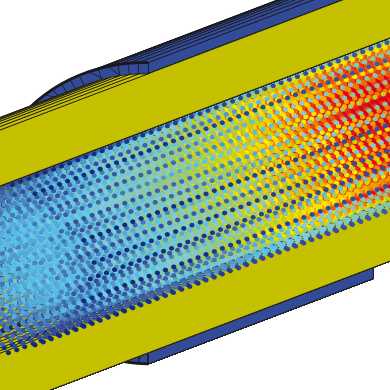
Thanks to a special computer programme, researchers from ETH Zurich are able to simulate electronic nanocomponents and help materials science and industry in the development and production process.
Summer storms and heavy rainfall in the future climate
News

Hail, thunderstorms and heavy rainfall. These extreme events are supposedly on the increase in the course of global warming. High-resolution simulations conducted by ETH-Zurich researchers on CSCS’s supercomputers now add more certainty to the projections.
The two faces of Mars
News
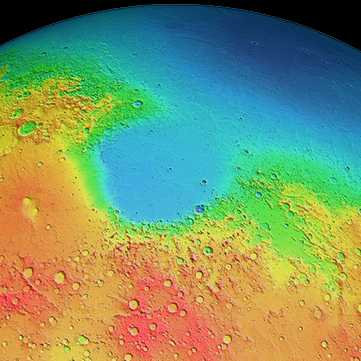
A moon-sized celestial object that crashed into the south pole of Mars: ETH geophysicists have conducted a three-dimensional simulation that shows for the first time how the Red Planet came to have two different hemispheres.
A voyage from the Earth’s crust to its mantle and back
News
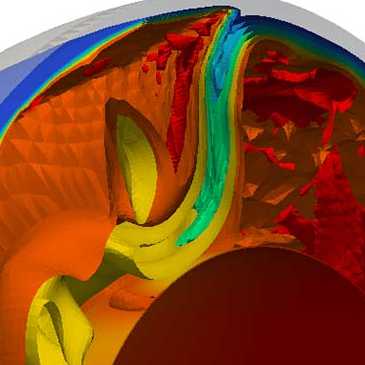
Uranium isotopes leave a distinct ‘fingerprint’ in the sources of volcanic rocks, making it possible to gauge their age and origin. Geologists have gained a new understanding of how the Earth’s crust is recycled back into its interior based on these uranium isotopes.
University of Zurich takes a stake in CSCS supercomputer
News
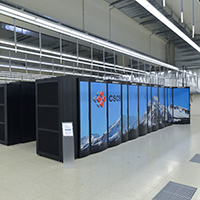
In May the Executive Board gave approval for the expansion of supercomputing at CSCS. The University of Zurich will contribute to the cost of one new computer. ETH Zurich is willing to allow all Swiss universities of applied science and other universities to hold considerable computing resources at CSCS.
Supercomputing record with bubble collapse simulation
News
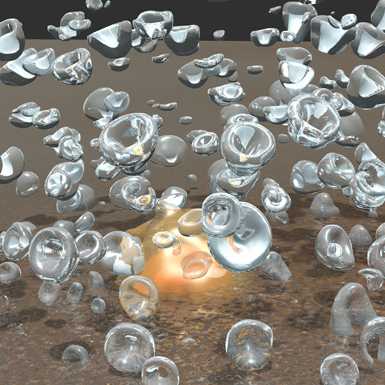
A new world record for flow simulations: A team of scientist led by ETH Zurich simulated cloud cavitation collapse and achieved unprecedented resolution and computing performance.